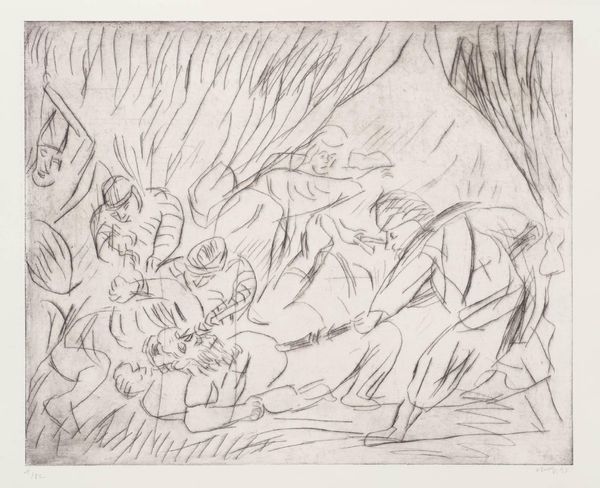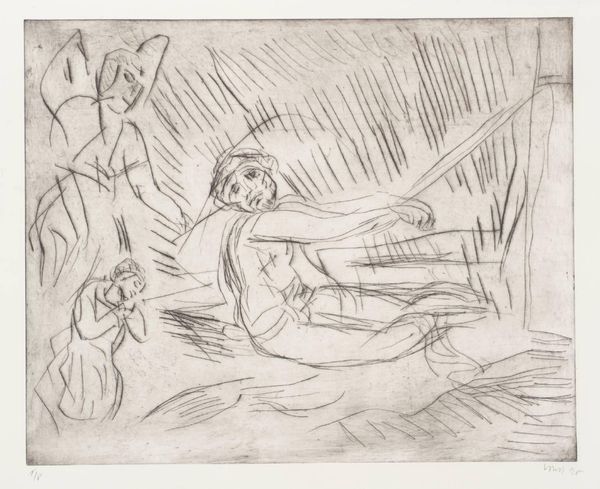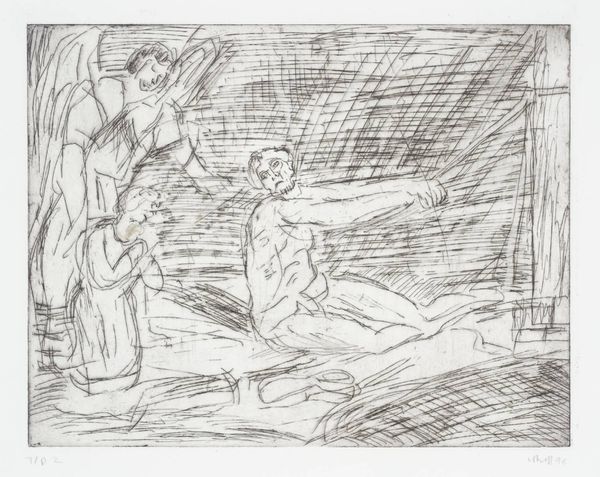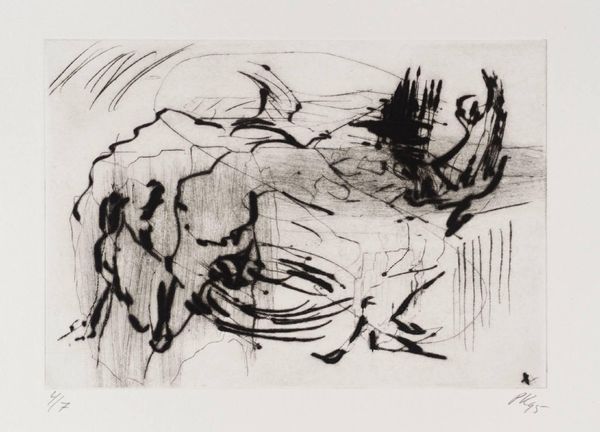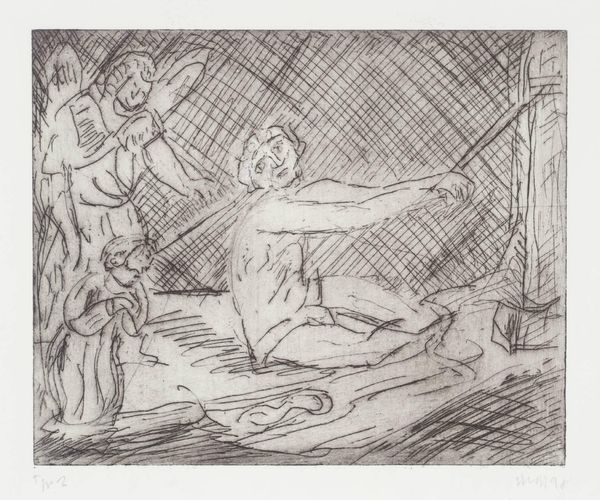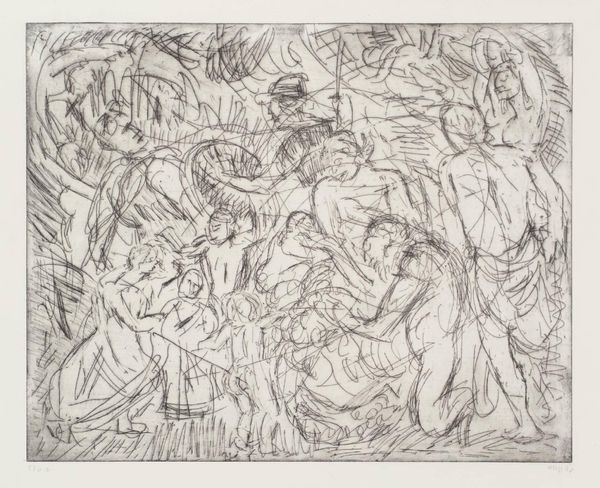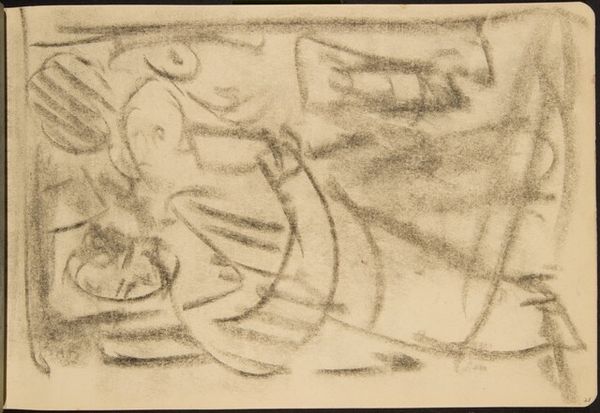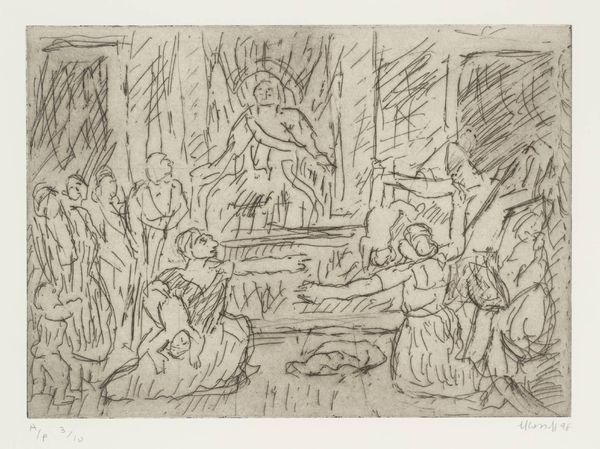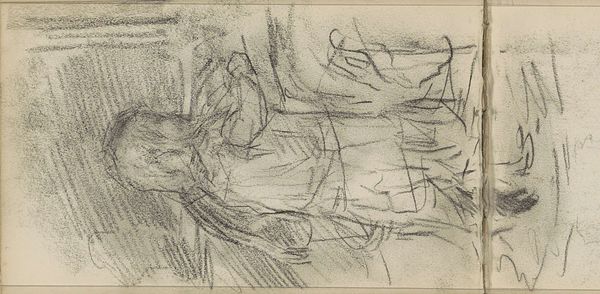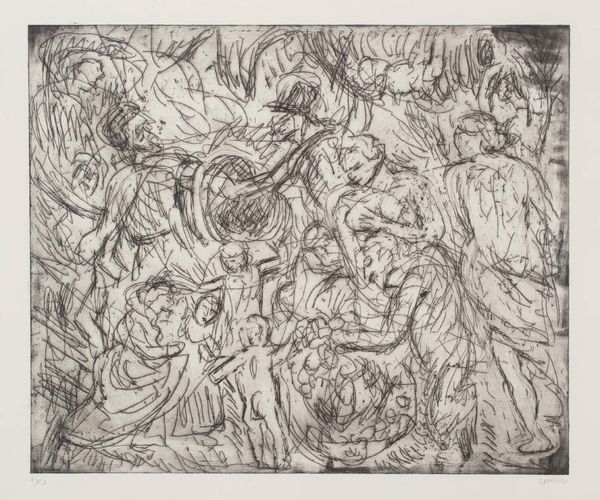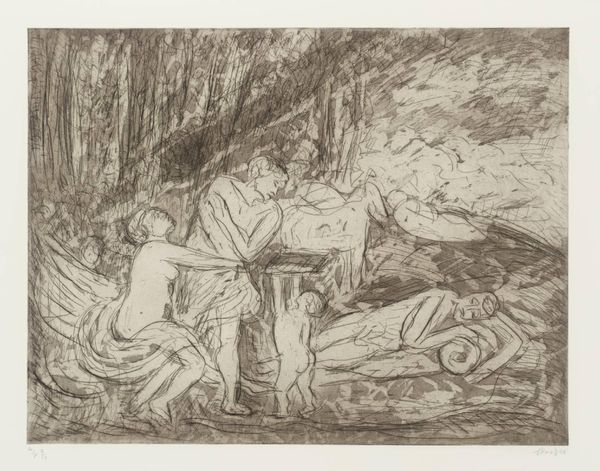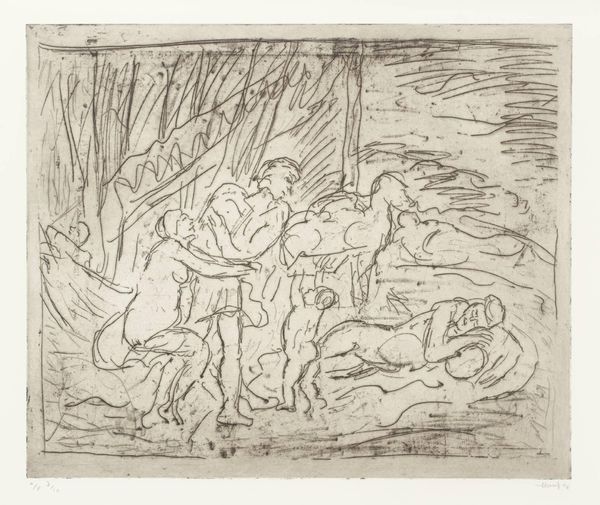
Copyright: © Leon Kossoff | CC-BY-NC-ND 4.0 DEED, Photo: Tate
Editor: This is Leon Kossoff's "The Lamentation over the Dead Christ (2)." The stark lines create a somber mood. What cultural memories do you see evoked in this piece? Curator: The lamentation scene is a potent image in Western art. Kossoff’s etching echoes centuries of grief, but with a modern, almost urgent visual language. Notice how the figures are both present and spectral. What does that tension suggest to you? Editor: It feels like the past is constantly bleeding into the present, especially with the raw, linear style. Curator: Precisely. Kossoff uses this visual shorthand to bridge the historical narrative with our own experiences of loss and mourning. It’s about continuity. I see it carrying cultural and emotional weight. Editor: That makes me appreciate the timeless aspect of such a devastating scene. Curator: Yes, it's a link through time, isn't it?
Comments
tate 7 months ago
⋮
http://www.tate.org.uk/art/artworks/kossoff-the-lamentation-over-the-dead-christ-2-p11722
Join the conversation
Join millions of artists and users on Artera today and experience the ultimate creative platform.
tate 7 months ago
⋮
This print is one of many etchings executed by Leon Kossoff in response to, and literally in the presence of, oil paintings by old masters; in this case The Lamentation over the Dead Christ, 1656-8, by Nicolas Poussin (1594-1665), owned by the National Gallery of Ireland, Dublin. Tate owns two prints by Kossoff after this Poussin painting (Tate P11721-2). The artist’s ability to explore a number of separate responses while making drawings and prints from a single subject is illustrated in these etchings. Tate owns the only artist’s proof of this version.
